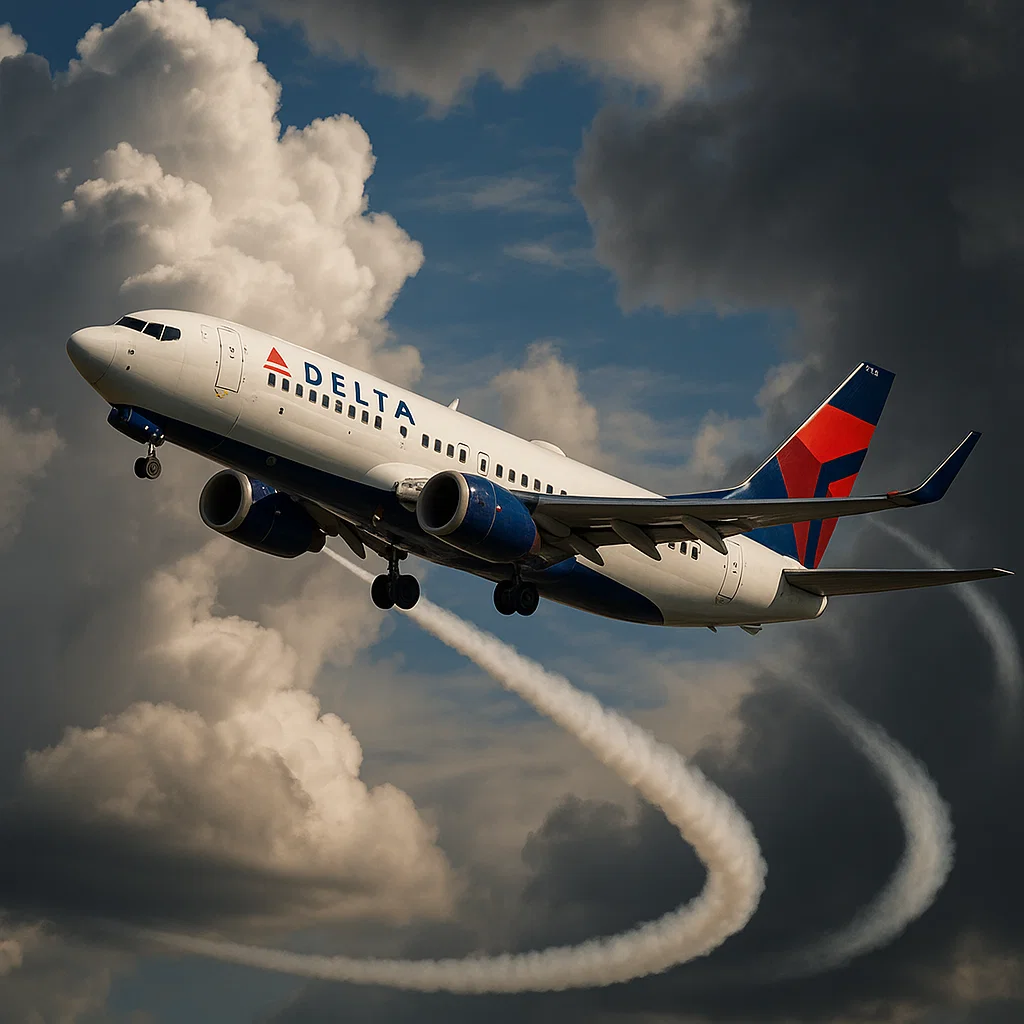Delta Flight DL153 recently made an unexpected mid-air diversion that caught the attention of passengers and aviation watchers alike. This article provides an in-depth explanation of the diversion, the reasons for the emergency route change, and how Delta Air Lines handled the situation to ensure passenger safety.
The Original Flight Route of Delta DL153
Delta Flight DL153 was scheduled to fly from [Origin Airport] to [Destination Airport], following its usual flight path. The aircraft took off on time, and the initial part of the journey was reported to be smooth and uneventful.
Pre-Flight and Takeoff
Before departure, the crew conducted all routine safety checks and briefings. Passengers boarded as scheduled, with the expectation of a timely arrival at their destination. The flight crew maintained communication with air traffic control and closely monitored the aircraft systems during ascent.
The Reason Behind the Mid-Air Diversion
Approximately [X] minutes into the flight, the flight crew detected an issue that prompted immediate attention. Though the airline has not yet publicly confirmed the exact cause, early reports suggest several possible reasons.
Possible Causes of the Diversion
- Technical Malfunction: Aircraft systems such as engine performance or cabin pressure anomalies might have necessitated a diversion.
- Medical Emergency: A passenger onboard could have required urgent medical attention.
- Weather Conditions: Sudden severe weather at the destination airport could have made landing unsafe.
- Other Operational Concerns: Any other safety-related issue detected by the crew.
Pilot’s Decision and Safety Protocols
The pilot promptly informed air traffic control and declared the need to divert. In aviation, safety protocols prioritize landing at the nearest suitable airport when any issue threatens the safe continuation of the flight.
The Alternate Airport and Diversion Process
Instead of proceeding to the original destination, DL153 was rerouted to [Alternate Airport], chosen for its proximity and capability to handle emergency landings.
Coordination with Air Traffic Control
Delta’s flight operations team worked closely with air traffic controllers to secure a landing slot and prepare emergency response teams if necessary.
On-Ground Handling and Passenger Support
Upon landing, ground staff were ready to assist passengers with accommodations, transportation, and further travel arrangements. Customer service teams worked diligently to answer questions and facilitate rebooking.
Passenger Experience During the Diversion
The occurrence was both worrying and relieving for DL153 passengers.
Communication and Crew Support
Updates and calm flight attendants reduced customer anxiety. The professionalism was praised on social media by many tourists.
Delay and Impact on Travel Plans
While the diversion caused delays, passengers appreciated that their safety was the airline’s top priority.
Understanding Flight Diversions: Why They Happen
Flight diversions are a critical part of aviation safety and can happen for a variety of reasons.
Importance of Diversions in Aviation Safety
Diversions ensure that aircraft can land safely if continuing on the original route poses a risk. Airlines follow strict guidelines and training to manage such situations.
Frequency and Handling of Diversions
Though relatively rare, diversions are handled with precision and care to minimize inconvenience and maximize safety.
What’s Next for Delta Flight DL153?
Delta Air Lines is investigating the situation at length.
Aircraft Inspection and Maintenance
Specialist teams are inspecting the aircraft for any faults and addressing them before the plane returns to service.
Passenger Rebooking and Compensation
Passengers affected by the diversion are being rebooked on subsequent flights and informed about any compensation or assistance available.
Conclusion
The mid-air diversion of Delta Flight DL153 highlights the complexities of air travel and the critical role of safety protocols. While unexpected, such diversions ensure passengers and crew remain safe under any circumstances. Delta’s swift action and transparent communication serve as a reassuring example of how airlines prioritize safety above all else.
FAQs
Why was Delta Flight DL153 diverted mid-air?
Delta has not officially disclosed the exact reason, but diversions often happen due to technical malfunctions, onboard medical emergencies, adverse weather, or other safety concerns detected during the flight.
Where did Delta Flight DL153 divert to?
Delta Flight DL153 was redirected to the nearest suitable airport, [Alternate Airport], selected for its proximity and ability to safely accommodate the emergency landing.
How does Delta Air Lines handle flight diversions?
Delta prioritizes passenger safety by coordinating with air traffic control, keeping passengers informed, and providing ground support, including accommodations, transportation, and rebooking options.
Will passengers be compensated for the detour and delay?
Compensation depends on the nature of the diversion and the airline’s policies. Passengers are advised to contact Delta’s customer service for details on possible refunds, vouchers, or accommodations.
What happens to the aircraft after a diversion?
After landing, the aircraft undergoes thorough inspections and maintenance checks to identify and resolve any issues before it resumes normal service.




